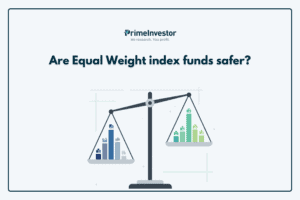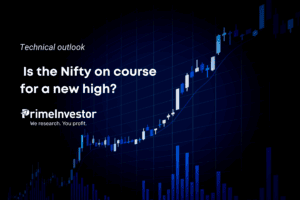With mutual funds gaining popularity, there are now many click-bait headlines in social media. “Your SIPs make your fund manager richer”. “Mutual funds take a big bite out of your returns” and so on.

At PrimeInvestor, we aren’t fond of mutual funds with high fees. But in dissing all mutual funds because they charge a fee, we think these influencers are missing the woods for the trees. In the investment world, all decisions you make are relative. So, the question you need to ask is whether mutual fund fees are exorbitant in relation to other investment products. Here, we tell you all you need to know about mutual fund expenses, so you can judge for yourself.
What is expense ratio in a mutual fund?
When you invest in a mutual fund, you have in effect outsourced the management of your money to a fund manager from a mutual fund company (AMC). For this service the AMC charges a fee and this is what you see as ‘total expense ratio’ or TER.
All financial products charge fees. In mutual funds (and a few other products), these fees/charges are stated explicitly while in others they could be hidden.
A mutual fund’s TER is stated in percentage terms and it refers to a percentage of the Net Asset Value (NAV) of the fund. The TER is arrived at by dividing the total expenses incurred by the fund by the assets managed by it.
What goes into an expense ratio?
An AMC incurs several costs in managing your money and these costs make up the components of the total expense ratio or TER.
If you look at the expense ratio statement of any AMC, you will find a column titled ‘Base TER’, additional columns for few other cost items and a grand total called the ‘Total TER’. This ‘Total TER’ number is what is referred to as TER and is used in comparing schemes and making decisions.
Components of Base TER
The following are the main items that are included under the Base TER.
- Fund management expenses – including salaries and other forms of compensation to fund managers and their teams
- Servicing – providing investor services like account statement, documentation etc.
- Registrar and Transfer expenses, which are the fees paid to RTAs for facilitating transactions
- Custodial expenses
- Marketing expenses
- Business expenses of the AMC (rents, branches, infrastructure etc)
In addition to all of these, of course, is a profit for the AMC – it’s all a business at the end of the day!
How much can an AMC charge as Base TER?
Most businesses around the world are free to fix any price for their goods or services. Mutual funds, however, cannot. An AMC is not free to charge whatever it pleases by way of Base TER.
SEBI caps the TER via a slab based system. The table below details the limits that are in force at present for open ended equity oriented and other than equity-oriented schemes.
The Base TER limits for all other schemes is as below.
Here is an example of how the limits would be arrived at for an equity fund with an AUM of Rs. 4,000 crore. It would not be 1.6% but 1.752%. Here is how:
- The first Rs 500 crore will be charged 2.25%
- The next Rs 250 crores will be charged at 2.00%
- The next Rs 1,250 crores will be charged at 1.75%
- The final Rs 2, 000 crores will be charged at 1.6%.
The weighted average of these comes to 1.752%. This is the base TER that can be charged to investors in this scheme. Typically, most funds will charge a little less than the maximum allowable expense.
What’s not included in the Base TER?
Over and above the limits specified above, AMCs are also allowed to charge the following four additional items as expenses.
- Brokerage and transaction costs which are incurred for the purpose of execution of trades
- Expenses toward inflows from B30 cities (The top 30 geographies are known as T30 and the others are referred to as B30. This additional allowance is to encourage greater MF penetration in these geographies where it is believed more effort will have to be put into investor/ customer education by the distributors).
- Additional expenses for schemes having provision of exit load - i.e., a scheme can charge an exit load from investors who redeem from their investments within the exit load period. Therefore, it becomes an expense from the investor's perspective. The exit load charged is ploughed back into the fund.
- GST on the investment and advisory fees of the AMC
These items also have individual prescribed limits. The base TER (subject to the slabs detailed above) plus the four additional items listed above form the total TER which is charged to the fund. This is also the number that is published and that you see.
How does the investor pay the expense ratio?
The TER is not an added charge on you as an investor. The TER is deducted from the value of the scheme’s portfolio while calculating its NAV. The following are the principles behind how the mechanism of TER works.
Every single day the NAV of the fund is published. This NAV number has already had a tiny fraction deducted from it that goes to account for the expense ratio. The amount thus deducted goes to the AMC every day and gets used for various expenses required to manage the scheme.
As the TER is calculated for each day and deducted from the NAV on a daily basis, you pay for exactly as long as you are invested in the fund. Every investor in a scheme sees the same NAV which gets updated on every business day. Therefore, this mechanism ensures that it adheres to the following three principles.
- It is equitable – If you invest in a mutual fund scheme, your money is treated the same way as all other investors’ monies in the scheme. An investor investing Rs 1 crore will be treated the same way as someone investing Rs. 10,000. The expense ratio is uniformly charged to all the investors who hold units in the scheme.
- It is proportional to your period of investment – TER is expressed as an annual percentage. But what if you invest for 6 months? Or 3 years and 3 months? The mechanism takes care of this by being charged on a daily basis.
- Not an explicit charge – The charge is implicit and is deducted from your investment. This means that all returns presented by mutual funds or third-party ranking sites are after accounting for fees.
Regular vs. Direct Plans
As you may know, all mutual fund schemes come in two variants - direct and regular. Under the ‘direct’ option, you invest by yourself or via a fee-only advisor.
Under the regular option, you go through a distributor who likely also provides you with some guidance. For this, there is obviously a cost – i.e., commission - involved. Here again, you don’t pay this cost separately. Under regular plans, you get charged a higher expense ratio, which includes commission and distribution costs. The distributor gets paid a part of the expense ratio.
With direct plans, since there is no distributor, the distributor’s commission does not get charged to the expense ratio. The other fees are charged.
Therefore, expense ratios of direct plans are lower than those of regular plans. When you invest in the direct plan of a scheme for the same period of time as against another investor who invests in the regular plan, the direct plan will make higher returns. Higher the expense difference between the two, the more you gain by using the direct plan.
So how do you know if this differential in a fund is reasonable or much more than the norm?
- We have a very handy tool – the MF Expense Ratio Direct vs Regular tool (you will find it in the MFs & ETFs menu, under Tools). This unique tool lets you easily compare the expense ratios of the direct and regular plans of the same fund, to know the differential, plus compare expense ratios and the differentials against the category’s average. This tool, thus, lets you know at a glance if your fund is charging excessively under the regular (or even direct) plan.
- Our Portfolio Review Pro tool also highlights funds with a regular plan where the expense ratio differential over the direct plan is higher than the average. it also lists the direct and regular expense ratios for your easy comparison.
For more details on comparing expense ratios between direct and regular plans, please refer to this article: How to compare regular and direct plan expense ratios.
Why costs matter
From an investor’s perspective, the less you pay, the greater the potential returns. When a fund charges a lower expense over the medium to long term, the difference can be substantial as it compounds.
Let’s take an example of two imaginary funds that have identical portfolios (very unlikely, but let’s just assume so for illustrative purposes). The portfolio gains 12% in a year. If Fund A charges an expense ratio of 2% and Fund B charges 1%, the returns in the hand of the investor would be 10% for Fund A (12% – 2%), and 11% for Fund B.
And this compounds every year that you hold the funds. So, if we draw out this above imagined pair of funds over a period of 5 years, you can see the returns as below (assuming another highly unlikely scenario of the portfolios returning the same 12% every year).
Amount of investment: Rs 100,000
As you can see, the difference in the returns add up to a lot. And since you typically hold mutual funds for long periods of time – upwards of 10, 15 years of time – the difference can become substantial. (Please note that this is a highly simplistic illustration for ease of understanding).
How to look at fund costs
Before you automatically jump to the fund with the lowest expense ratio, remember that returns are the primary factor in a mutual fund and ultimately what accrues to you.
In our illustration above, we artificially created two funds with the same portfolio that returned exactly the same every year. In reality, this scenario is impossible. Funds are qualitatively different from one another and some funds return more than others because their portfolios are managed far better.
Therefore, a fund with a high expense can still deliver much higher returns than a fund with a lower cost if it has a better portfolio and strategy. By sticking to only low-expense funds, you will be compromising returns in the hankering for low costs. So, basing fund choices solely on lower expense ratio is flawed. Here are some key points to remember when considering a fund’s expense ratio.
- Expense ratio should not be viewed in isolation.
- Performance, portfolio quality and how the fund fits into your portfolio should take precedence.
- In general, you need to worry less about a high expense ratio in a scenario where the fund and the market are both delivering. In categories with strong double-digit return potential – all equity funds, aggressive hybrid funds – the expense ratio is less important, as the high returns and big differentials between fund performance can more than compensate for higher costs. Expense ratio becomes more important in lower-returning classes such as debt, equity savings, arbitrage or balanced advantage.
- Some categories that are high maintenance (tactical allocations, multiple asset classes or high due diligence on credit risk etc.) can have higher costs. This is par for the course and should not be a reason to be wary.
- The expense ratio can be a deciding factor only when you are comparing the direct and regular versions of the same fund. Of course, if you are a user of PrimeInvestor there is little reason for you to go for a regular plan 😊
Our fund recommendations at Prime Funds may feature funds that have a higher expense ratio than peers. That is a considered call based on its track record. We recommend the direct plan as the default option, especially with Prime Funds. Our Buy/Sell/Hold calls specify where a fund is better invested through the Direct plan, based on the difference between the regular & direct plans.
Let’s end with some key misconceptions about expense ratios.
- They are charged when you redeem: No, they are not. They are charged on an everyday basis.
- We should subtract expenses when we calculate returns: Not true. All mutual fund returns are calculated after considering costs. Returns are calculated based on NAV, and NAV is published after expense ratio deduction.
- Expense gets charged only when the scheme does well: Not true. Regardless of whether the scheme is moving up or down, the expense keeps getting charged.
- We should always choose funds with lower expense ratios: Not a good idea, as explained above. Choose funds based on their return track record, portfolio quality and potential to perform. Acting based on costs alone will lead to flawed decision making.
- Expense ratios are the same for all funds in an AMC: Not true. Every scheme in every AMC has its own specific expense ratio.
- Expense ratio is a fixed percentage: Not true, expenses are charged to the scheme based on actual charges incurred by the AMC and could vary over a period of time. What you see as the expense ratio is the number for the recent period of time.
SEBI regulation of fees and expenses AMCs charge to funds is not new and has not been static. It has been reviewed and revised to match the needs of the industry. While major changes were made in 2012 and then in 2018-19, in 2023, SEBI decided to halt B-30 commissions, one of the items AMCs were allowed to charge in addition to the base TER. This was due to concerns that there were not enough systems and checks in place to ensure proper computation of these commissions.
SEBI is now mulling a further overhaul of the way in which fees and expenses will be charged to funds including:
- A TER limit inclusive of ALL fees and charges, where there are no add-ons to Base TER
- A simpler, more manipulation-resistant system for B 30 commissions
- Making TER inclusive of GST on investment and advisory fees
- Replacing scheme-based slab structure with AMC level AUM based slabs
- Lower TER limits across slabs
Reference: SEBI Consultation paper
This consultation paper however has been hanging fire for a while. We will update you when any changes are made with respect to TER!






14 thoughts on “Mutual fund expense ratio: All you wanted to know ”
Investors get messages from AMCs from time to time about “Change in expense ratio” of a particular fund. The changes (mostly increases) are often small. Is there any regulation on how frequently the AMCs can change their TER? Or do they have lot of flexibility as long as they are within the prescribed range?
Hello,
There is no limit on how often AMCs can change their TER as long as it stays within the limits. They are just supposed to intimate investors when they do change the TER.
Thanks,
What surprises me is that these influencers talk of return and TER in the same breath. I mean if you have already mentioned return then why do you even mention TER. I suspect a lot of them don’t even know that return has the TER factored in.
On a different note, I wonder what is it with Indian funds. Should the TER not reduce as the AUM goes up? Because a lot of that expense would be salaries and marketing and I don’t see them going up in line with the AUMs. But the Index Fund TERs take the real cake in India! Some of those have ridiculous TERs.
Is there a way we can “easily” read breakdown of a fund’s expenses? I’d especially like to see how much they paid in salaries and how much they paid on marketing.
The TER does reduce as the AUM goes up; SEBI defines the max TER chargeable based on AUM. The fund-wise breakdown of the TER is not given. You can see the annual or semi-annual financials that AMCs publish for an understanding of an AMC’s expenses. You are right in that main costs do not go up in tandem with AUM; this is one of the reasons AMCs want AUM 🙂 and which makes the AMC business an attractive one – thanks, Bhavana
Nice article, demystifying a lot on Expense Ratio.
One doubt, “Exit load on investors” will be an income to the Fund house rather than expense if I am not wrong. I presume that will also go to the Fund house and added back to the Fund’s NAV.
Yes Sir – The point should read as “additional expenses for schemes having provision of exit load”. It has been rectified now.
Thank you for bringing it up.
I am not sure I understand this.
Are AMC’s allowed to charge more expenses for a scheme with an exit load than without? Why?
Excellent article, keep it up
Excellent article. Finfluencers want to sell their courses. Hence they spread false rumours that active funds don’t deliver etc and the expense ratio is a waste.
As always, an excellent piece of analysis and very helpful!
Hi,
My query
Funds charge for early redemption within certain specified period. This amount is a profit to AMC or it gets added to added to fund’s profit ?
Regards
Jatin Mehta
Hello Sir,
This gets added back to the fund.
Thanks
So, assume an exit load of 1% and an investor redeems units worth INR 100.
Is it correct that the AMC will only liquidate INR 99 worth of assets (or deduct from cash holding) and thus the 1 rupee of exit load remains inside the fund?
And the AMC is allowed to charge an expense for having this provision?
A fund can charge an exit load for redemptions within a specific period (this period will differ for each fund) called the exit load period. So when you redeem within this, the fund will levy a charge on you. Therefore, for you, it is an expense. However, this charge gets put back into the fund. This is meant to discourage investors from redeeming early, and to reduce the impact of such early redemptions on existing (longer-term) investors in the fund.
We have edited this point in the article to make it more clear, since it seems to be causing some confusion. – thanks, Bhavana
Comments are closed.